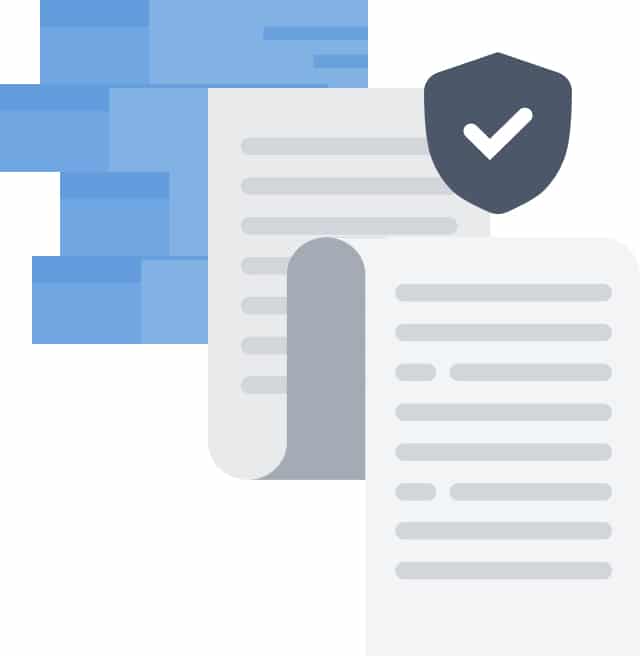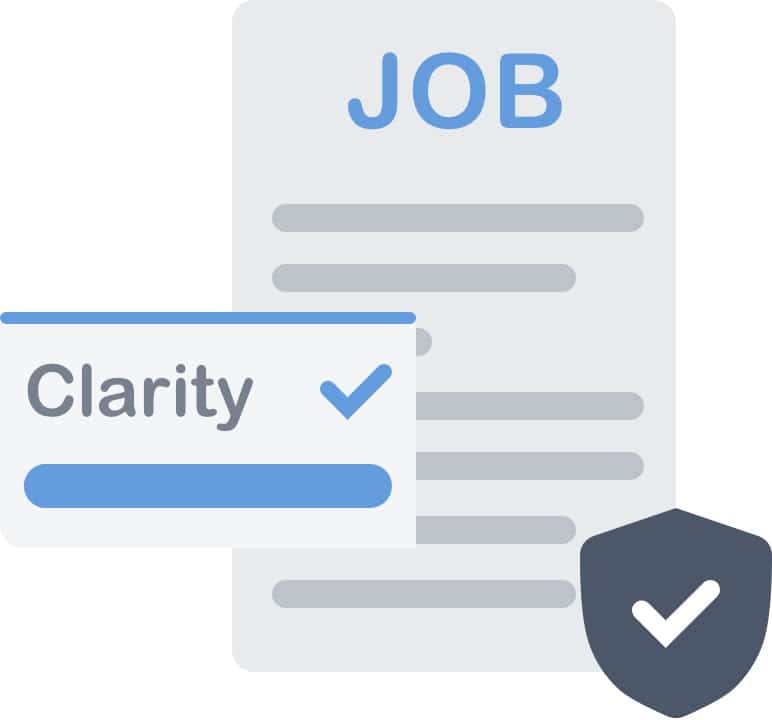Companies subject to U.S. labor and employment laws put a lot of effort into complying with those laws. But is job description compliance a part of that?
Compliance is nothing new to HR professionals, but job description compliance may be. Basically, job description compliance means writing job descriptions that help your compliance efforts, provide clarity about a position, and communicate a commitment to inclusion. And it’s not just about legalities.
More on compliance + pay transparency:
- (U.S.) Job Description Compliance Law 101
- Compliant Job Ads Help Recruiting Diversity, Quality
- Guidance for New Pay Transparency Laws
- “Competitive Salary” Signals Low Pay
What compliance entails
Compliance with federal labor and employment laws is vital for employers covered by those laws. Your human resources team probably spends a fair amount of time on it, especially if they conduct annual audits. Their efforts help your company avoid fines, private litigation, and legal issues.
If you’re familiar with job description compliance, you already know about the overwhelming number of regulations and guidelines in the U.S. addressing fairness in the workplace. On the federal level alone, you have the Fair Labor Standards Act (FLSA), the Americans with Disabilities Act (ADA), the Age Discrimination in Employment Act (ADEA), and a whole lot more. And, of course, there’s the Civil Rights Act (CRA).
From the U.S. Department of Labor’s website:
“The U.S. Department of Labor (DOL) administers and enforces more than 180 federal laws. These mandates and the regulations that implement them cover many workplace activities for about 10 million employers and 125 million workers.”
And that’s just the federal laws.
You not only have to understand which federal, state, and local regulations apply. You also have to track the constant evolutions of those laws and regulations, which can change year after year. If you’re operating in a state like California, for example, keeping up can be time-consuming.
Job description compliance is a part of compliance
So, how does job description compliance fit into the picture? For one, it helps with your compliance efforts, similar to posting Department of Labor notices on your office walls.
Although labor laws don’t require you to provide job descriptions, they’re vital to recruiting. In fact, job descriptions provide a great opportunity for you to convey your company’s commitment to compliance in general. By accurately laying out what a job entails, you’re providing clarity to reduce potential disagreements down the road. And if a disagreement does come up, you have supporting evidence against a violation.
Of course, listing “regularly lift 30 pounds” as an essential function doesn’t prevent violations elsewhere or automatically mean you’re covered. But it does provide supporting evidence of your good-faith effort towards compliance.
Job description compliance helps in your recruiting efforts
Job description compliance also helps your recruiting efforts by establishing clarity about positions while also conveying inclusiveness.
Writing compliant job descriptions forces you to, first and foremost, think hard about the essential and non-essential functions of a position. When you understand the role on a fundamental level, you can better define the role for job seekers. An accurate description helps with compliance but also helps job seekers determine whether the role is right for them. If both parties are clear about what a job is, you have a much better chance of finding a qualified candidate.
Using our previous example, if carrying 50-pound boxes is a daily requirement, you’ll definitely want to list that. But also consider that the ADA requires reasonable accommodations for essential job functions. So if you list a 50-pound lifting requirement as an essential function, understand whether you can drop it to 25 pounds for an employee covered by the ADA.
But a requirement like this isn’t only about the ADA; it’s also about being intentional and clear. Heavy lifting in an office job, for example, may deter qualified candidates without disabilities who are concerned about repeated heavy lifting at work.
And if you convey inclusiveness, you increase the chance that qualified candidates feel comfortable applying, regardless of their background. You broaden your talent pool which, in turn, increases your chances of finding a qualified candidate.
Why does job description compliance matter?
If you haven’t thought about job description compliance before, consider the benefits to both your company and job seekers. It helps your compliance efforts, establishes clarity about positions, and conveys inclusiveness.
Again, job description compliance is a new concept. However, it can and should be a fundamental piece of your overall compliance effort. It complements the compliance work you’re already doing, and it helps improve your recruiting efforts overall. (Job description software can help.)
